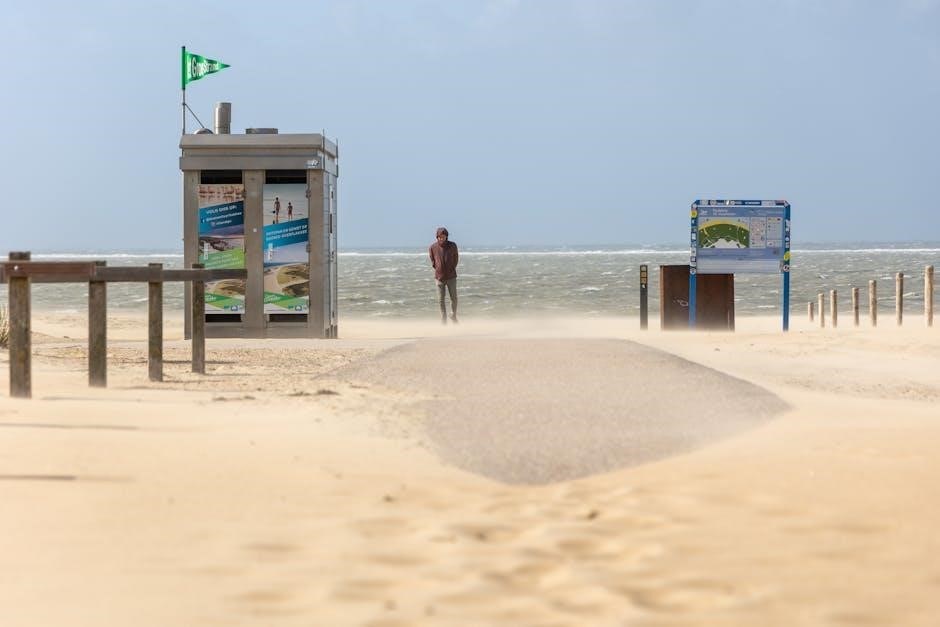The Orbea Alma M25 is a high-performance XC mountain bike featuring a lightweight carbon frame, designed for versatility and speed on various terrains. This guide provides essential information on sizing, ensuring riders can select the perfect fit for optimal comfort and performance.
Overview of the Orbea Alma M25
The Orbea Alma M25 is a lightweight, high-performance cross-country mountain bike designed for versatility and speed on diverse terrains. Featuring a carbon fiber frame, it combines durability with a responsive ride. Equipped with a Fox 32 Float SC Performance fork and DT Swiss X-1900 wheels, the M25 excels in both efficiency and control; Its sleek design and advanced components make it ideal for XC racing and trail riding. With a focus on ergonomics and comfort, the Alma M25 caters to riders seeking a balance between performance and reliability. This bike is a top choice for those looking to optimize their mountain biking experience.

Understanding the Importance of Bike Size
Proper bike sizing ensures optimal performance, comfort, and safety, allowing riders to maintain control and efficiency while minimizing the risk of discomfort or injury during rides.
Why Bike Size Matters for Performance and Comfort
Bike size is crucial for both performance and comfort, as it directly impacts a rider’s ability to control the bike efficiently and maintain proper posture. A bike that is too small or too large can lead to poor handling, reduced efficiency, and increased fatigue. For the Orbea Alma M25, proper sizing ensures optimal weight distribution, allowing riders to maximize power output and maneuverability on diverse terrains. Additionally, correct sizing reduces the risk of discomfort or injury, enabling riders to enjoy longer rides with confidence. By selecting the right size, riders can fully harness the bike’s performance capabilities while maintaining a comfortable and ergonomic riding position.
Key Factors Influencing Size Selection
When selecting the right size for the Orbea Alma M25, several key factors come into play. A rider’s height and inseam are primary considerations, as they determine standover height and pedal efficiency. Torso length also plays a role in handlebar reach, ensuring proper upper-body positioning. Standover clearance is essential for safety, particularly on technical terrain. Additionally, riding style and terrain preferences influence size choices, as more aggressive riders may prefer slightly different geometries. By evaluating these factors, cyclists can narrow down their options and find a bike that aligns with their physical measurements and riding goals, ensuring both comfort and performance.
Orbea’s Sizing Philosophy and Fit Geometry
Orbea’s sizing philosophy revolves around a rider-centric approach, ensuring optimal performance and comfort. The Alma M25 features a tailored fit geometry, designed to accommodate a wide range of body types and riding styles. By balancing key metrics like reach, stack, and wheelbase, Orbea creates a responsive yet stable platform. The brand emphasizes proportionate sizing, where each frame size is optimized for specific rider heights, eliminating the need for excessive stem adjustments. This philosophy ensures that every cyclist can achieve a natural, efficient riding position, whether racing or trail riding. Orbea’s attention to detail in fit geometry enhances both speed and control, making the M25 a versatile choice for mountain bikers.

Orbea Alma M25 Size Chart
The Orbea Alma M25 size chart provides a detailed guide to frame sizes, corresponding to rider heights. It ensures proper fit and optimal performance for mountain biking.
Official Size Chart and Recommendations
Orbea provides a detailed size chart for the Alma M25, linking frame sizes to rider heights. The chart recommends frame sizes based on height, ensuring optimal fit and performance. Key measurements include inseam, torso length, and standover height. Riders are advised to match their height range to the corresponding frame size, with adjustments for personal comfort. The chart also considers handlebar reach and saddle height for ergonomics. While general guidelines are provided, Orbea emphasizes that individual body proportions may vary. Test rides are recommended to confirm sizing. Additionally, the chart highlights the importance of standover clearance for safety and maneuverability. Always refer to Orbea’s official resources for the most accurate and up-to-date sizing information.
Interpreting the Size Chart for Optimal Fit
Interpreting the Orbea Alma M25 size chart involves matching your height and inseam to the recommended frame size. Start by identifying your height range in the chart, then cross-reference it with your inseam measurement. This ensures proper standover clearance, a critical factor for safety and maneuverability. Next, consider your torso length to determine handlebar reach and saddle height. If you fall between sizes, choose based on your riding style—smaller frames for agility, larger for stability. Finally, test the bike to fine-tune adjustments, ensuring optimal ergonomics and comfort. Accurate interpretation guarantees a bike that fits your body and riding preferences perfectly.

Key Components Influencing Sizing
- Frame size impacts handling and stability.
- Fork and suspension travel affect ride comfort.
- Wheel size influences maneuverability and speed.
- Seatpost height and saddle positioning ensure proper ergonomics.
Frame Size and Its Impact on Handling
Frame size is a critical factor in determining how a bike handles. A properly sized frame ensures optimal control, balance, and maneuverability. For the Orbea Alma M25, frame size directly influences weight distribution and rider position, affecting how the bike responds to input. A frame that is too large or too small can lead to poor handling, making the bike feel sluggish or unstable. The Alma M25’s geometry is designed to provide a balance of stability and agility, but this is only fully realized when the frame size matches the rider’s proportions. Proper fit ensures precise steering and confident cornering, especially on technical terrain.
Additionally, frame size impacts the bike’s center of gravity and how it interacts with the rider’s body. A well-fitted frame improves overall stability at high speeds and during descents, while also enhancing traction and responsiveness. Riders who choose the correct frame size will experience better control and a more enjoyable riding experience. This highlights the importance of selecting the right size for optimal performance and safety on the trails.
Standover height is another key consideration, as it affects maneuverability and safety. Adequate clearance ensures riders can navigate obstacles and dismount safely, further enhancing the bike’s handling characteristics. By aligning frame size with rider dimensions, the Orbea Alma M25 delivers its intended performance and comfort, making it a versatile choice for various mountain biking disciplines.
Fork and Suspension Travel Considerations
The fork and suspension travel play a significant role in the overall ride quality of the Orbea Alma M25. Suspension travel determines how the bike absorbs shocks, impacting both comfort and control. The Alma M25 features a carefully tuned suspension system designed to optimize performance for its intended use. Riders should consider their riding style and terrain preferences when evaluating suspension travel. More travel generally offers better absorption of rough terrain but may add weight and affect handling on smoother trails. Proper suspension setup ensures optimal bike handling and rider comfort, making it essential to align fork and suspension travel with the rider’s needs and preferences.
Orbea’s suspension systems are tailored to the bike’s frame size and geometry, ensuring consistent performance across different sizes. Riders should also consider the fork’s compatibility with the frame and wheels, as well as the adjustability of the suspension. A well-matched suspension setup enhances the bike’s responsiveness, allowing riders to tackle various terrain with confidence. Always refer to Orbea’s specifications for suspension travel and fork compatibility to ensure optimal performance and safety.
Wheel Size Options and Their Effects
The Orbea Alma M25 offers two wheel size options: 27.5″ and 29″. Each size has distinct advantages, impacting handling, speed, and maneuverability. The 27.5″ wheels provide quicker acceleration and tighter turning, making them ideal for technical terrain. In contrast, the 29″ wheels maintain speed better and roll over obstacles more smoothly, which is advantageous for cross-country and less technical trails. The bike’s geometry is optimized for both sizes, ensuring consistent performance. Riders should consider their riding style and terrain preferences when choosing wheel size to maximize efficiency and enjoyment. Proper wheel size alignment enhances overall ride quality and responsiveness.
Orbea’s design ensures compatibility and balance regardless of wheel size, maintaining the bike’s intended handling characteristics. This adaptability allows riders to tailor their setup to specific needs, ensuring optimal performance in various conditions. Always consult Orbea’s specifications to confirm compatibility and ensure the best riding experience.
Seatpost Height and Saddle Positioning
Proper seatpost height and saddle positioning are critical for both comfort and performance on the Orbea Alma M25. The seatpost height should allow a slight bend in the knee when the pedal is at its lowest point, ensuring efficient power transfer and reducing strain on the joints. The saddle should be level or slightly tilted downward to maintain optimal weight distribution and prevent discomfort. Adjustments should be made to suit individual riding styles, with cross-country riders often preferring a slightly forward position for better control. Correct positioning enhances ergonomics and efficiency, maximizing the bike’s performance capabilities.
Orbea’s frame geometry is designed to accommodate these adjustments seamlessly, ensuring rider comfort and precision handling. Always fine-tune saddle height and position based on personal preference and riding style to achieve the best fit and performance.

How to Measure Yourself for the Perfect Fit
Measure your height, inseam, and torso to determine the ideal bike size. Use a flexible tape measure and stand straight for accurate results.
Measuring Your Height Accurately
To measure your height accurately, stand straight against a wall with your feet flat on the floor. Ensure your shoulders are relaxed and your head is level. Use a ruler or tape measure to mark the highest point of your head. Measure from the floor to this mark to get your height. For consistency, wear flat shoes and avoid slouching. Double-check the measurement by having someone else record it for you. Accurate height is crucial for determining the correct bike size, as it directly influences standover height and overall fit. Use this measurement to align with Orbea’s size chart for the Alma M25.
![]()
Understanding Inseam and Standover Height

Inseam and standover height are crucial for determining the ideal bike fit. Inseam measures the distance from the floor to the crotch, influencing the bike’s standover clearance. Standover height is the gap between the rider and the bike frame when standing over it. To measure inseam, stand against a wall with feet flat, wearing cycling shoes. Place a hardcover book or similar object against your groin and slide it up until it presses firmly. Mark the wall at the book’s top edge and measure this distance. For standover height, ensure there’s at least 1-2 inches of clearance on the Orbea Alma M25 for safety and comfort.
Measuring Your Torso for Handlebar Fit
To ensure proper handlebar fit, measure your torso length. Stand naturally and measure the distance from the base of your collarbone (C7 vertebra) to your hipbone. Alternatively, measure from the back of your neck to your elbow. This helps determine handlebar width and stem length. For mountain bikes like the Orbea Alma M25, a wider handlebar improves control. Use a flexible tape measure or a string to get accurate results. Compare your torso length to the bike’s geometry to ensure comfort and optimal reach. Proper fit prevents strain and enhances riding posture. Always test the bike in person for final adjustments.

Mountain Bike Geometry and Ergonomics
Mountain bike geometry influences handling, comfort, and efficiency. Key factors include head tube angle, seat tube angle, and suspension design. Ergonomics ensure optimal rider position and control.
Understanding Geometry and Its Impact on Fit
Mountain bike geometry directly affects how a bike fits and performs. Key elements like frame angles, suspension design, and component positioning influence rider comfort and efficiency. A well-designed geometry ensures optimal weight distribution, improving control and stability. For the Orbea Alma M25, the geometry is tailored to balance agility and comfort, with precise handling for various terrains. Understanding these metrics helps riders align their body position with the bike’s design, enhancing performance and reducing fatigue. Orbea’s rider-centric approach ensures that each size offers a consistent riding experience, making geometry a critical factor in achieving the perfect fit.
Reach, Stack, and Other Key Metrics
Reach and stack are fundamental metrics in bike geometry, directly impacting rider comfort and efficiency. Reach measures the horizontal distance from the saddle to the handlebars, while stack refers to the vertical distance from the bottom bracket to the headset top. These dimensions determine the rider’s posture, with shorter reach promoting an upright position and longer reach favoring aerodynamics. Orbea Alma M25’s geometry balances these metrics to suit various riding styles. Other key factors include seat tube angle, head tube angle, and wheelbase, all contributing to stability and responsiveness. Proper alignment of these metrics ensures optimal fit and performance for riders of different sizes and preferences.
Orbea’s Approach to Geometry and Rider Comfort
Orbea prioritizes a rider-centered design philosophy, blending performance with comfort through meticulous geometry tuning. The Alma M25 features optimized reach and stack measurements to accommodate diverse rider preferences, ensuring a balanced position for efficiency and control. Orbea’s approach emphasizes proportional frame angles and ergonomic cockpit placement, reducing fatigue on long rides. By tailoring key metrics like seat tube angle and wheelbase length, Orbea ensures consistent handling across all sizes. This thoughtful geometry promotes a natural riding posture, enhancing both power transfer and overall comfort, making the Alma M25 adaptable to various riding styles and terrain demands.

Choosing the Right Size for Your Riding Style
Selecting the right size ensures optimal performance and comfort. Align the bike size with your riding style, whether aggressive or relaxed, and terrain preferences. Always test ride.
Practical Tips for Selecting Your Size
Start by consulting Orbea’s official size chart for the Alma M25, matching your height and inseam to the recommended frame size. Consider your riding style—aggressive racers may prefer a smaller frame for agility, while endurance riders might opt for a larger size for comfort. If unsure, sizing down for a more responsive feel or up for stability. Test rides are essential to confirm fit, as personal comfort and handling preferences vary. Adjust the stem, handlebars, and saddle height to fine-tune ergonomics. Professional bike fitting can also provide personalized recommendations. Always prioritize a balance between performance and comfort for the best riding experience.
Common Mistakes to Avoid When Sizing
One of the most common mistakes is relying solely on height without considering inseam or standover height. Riders often overlook the importance of test rides, assuming the size chart alone is sufficient. Neglecting personal comfort for trends, like choosing a frame too small for aesthetics, can lead to poor ergonomics. Another error is ignoring riding style—trail riders may need more stability than a race-oriented size provides. Failing to adjust handlebar width, stem length, and saddle height after sizing can also compromise fit. Always prioritize practicality and comfort over assumptions, and use Orbea’s size chart as a starting point, not the final decision.

Additional Considerations
Additional considerations include riding style, terrain preferences, standover height, and test rides to ensure optimal performance and safety on the Orbea Alma M25.
Riding Style and Terrain Preferences
Your riding style and terrain preferences significantly influence bike size selection. Cross-country riders prioritizing efficiency may opt for a slightly larger frame, while trail riders favoring maneuverability might choose a medium size. Endurance riders often prefer a balance of comfort and performance, leaning toward sizes that align with their standover height and torso measurements; For technical or downhill-focused terrain, ensure adequate clearance and stability by selecting a size that maintains optimal handling. Testing the bike on varied surfaces can reveal the best fit. Consider how your riding style and terrain demands impact geometry, ensuring the Orbea Alma M25’s performance meets your specific needs for both comfort and control.
Standover Height and Safety Margins
Standover height is a critical factor in ensuring safety and comfort on the Orbea Alma M25. It refers to the clearance between the rider’s inseam and the bike’s top tube when standing over the frame. Adequate standover height provides a safety margin, reducing the risk of injury in the event of an unplanned dismount. Proper clearance also improves control and maneuverability, especially on technical terrain. Measure standover height by placing the bike on level ground and standing with feet shoulder-width apart. The ideal clearance is approximately 2-5 cm, depending on riding style and terrain. The Orbea Alma M25’s frame design ensures a safe and efficient fit for riders of various heights, maintaining optimal performance while prioritizing safety.
Test Rides and Adjustments
Test rides are essential to confirm the optimal fit and performance of the Orbea Alma M25. They allow riders to assess how the bike handles and feels in real-world conditions. During a test ride, pay attention to comfort, control, and responsiveness. Adjustments such as saddle height, handlebar position, and suspension settings can be fine-tuned to suit individual preferences. Ensure proper leg extension and reach to maintain efficiency and reduce fatigue. Wearing appropriate riding gear, including shoes and a helmet, provides a realistic experience. Testing on familiar terrain helps evaluate the bike’s performance and ensures confidence in its setup before finalizing the purchase.
Selecting the right size for your Orbea Alma M25 is crucial for maximizing performance, comfort, and safety. By carefully measuring your body, understanding the size chart, and considering your riding style, you can ensure an optimal fit. Remember, proper sizing enhances handling, efficiency, and overall enjoyment on the trails. Don’t hesitate to test ride different sizes and adjust components like the saddle and handlebars to fine-tune your setup. With the Alma M25’s precise geometry and customizable options, finding your perfect match is achievable. Invest time in this process, and you’ll reap the rewards of a tailored fit that elevates every ride.
